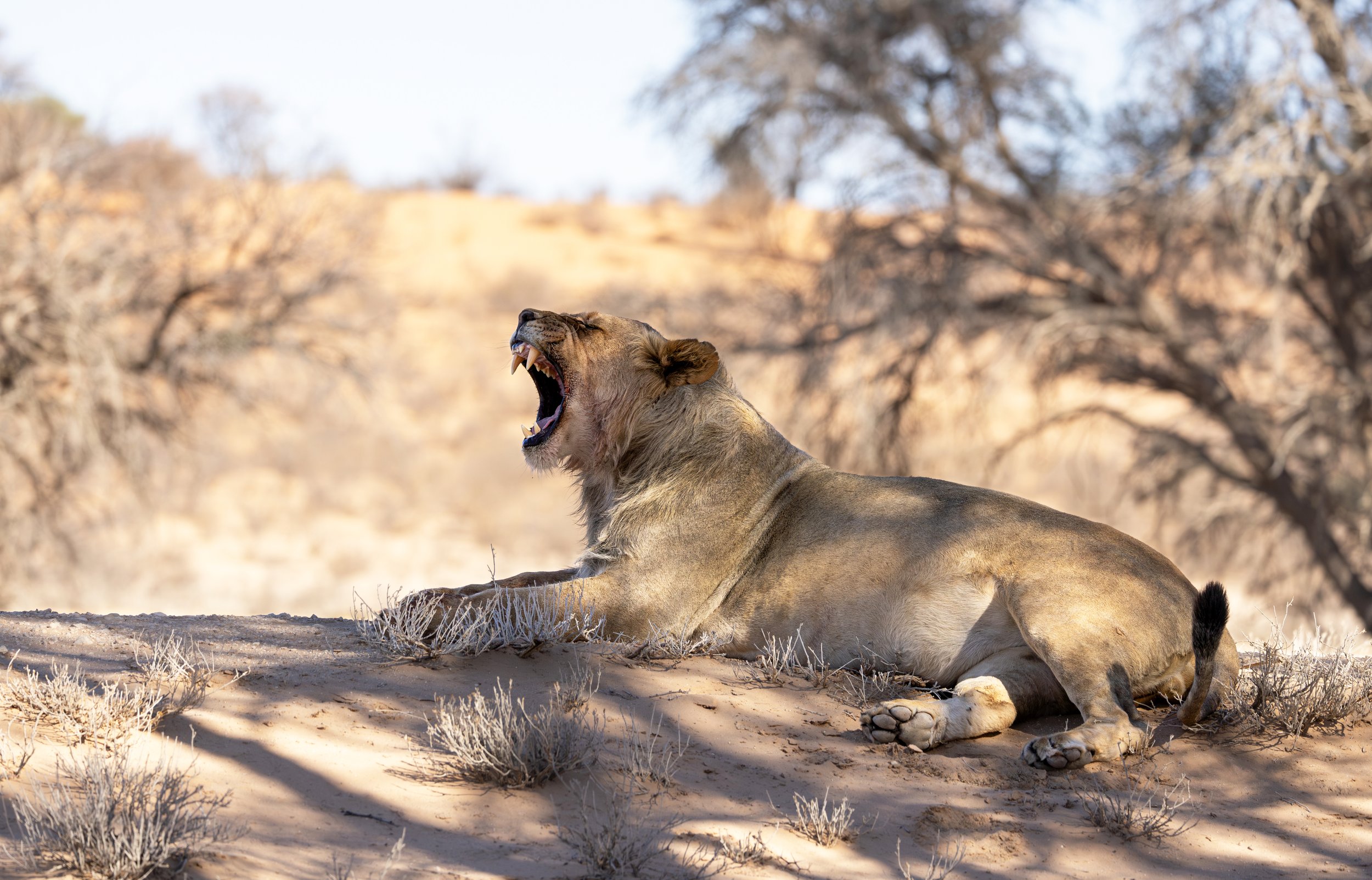The 3 Musketeers - the new era of lion in the Kgalagadi Transfrontier Park?
Leading up to our most recent trip to the Kgalagadi Transfrontier Park we were following the social media posts on the high lion activity in the park, and most notably the 3 subadult males called the Musketeers. We could not wait to see the havoc they were creating with our own eyes, come on, let’s go!
Background
The story goes that 6 subadult males (around 2.8 years old) were banished from the Lower Dune pride by the adult males in order to maintain their dominance. The 6 split into 2 coalitions of 3 and the 3 affectionately known as The Musketeers simply walked down the dune road and settled into the area around Kij Kij waterhole. They encountered little resistance as the dominant males of that territory were occupying an area further south around the Rooiputs waterhole. The tension was palpable and when the 2 Rooiputs adults attacked and killed one of the 3 subadults from the other coalition that had settled around Twee Rivieren the message was unmistakable, the adult brothers were not happy with the trespassers and that they were heading back north to reclaim their Kij Kij territory - trouble was on the horizon for the 3 Musketeers!
Graveyard
As we entered the park on day 1 the evidence of the brutal power of these lions was everywhere, the vast amount of carcasses that were slowly being reclaimed by the red sand was mindblowing.
During our visit we would witness lions feeding on eland or wildebeest every 2nd day, the poor animals moving into the Nossob riverbed from Botswana did not stand a chance against the voracious killing machines.
Below is the carcass of a hyena (or at least that is our guess)
3 Musketeers
The 3 musketeers were by far our favourite lions of this trip, and that is a bold statement to make considering we saw in excess of 40 lions during our 2 week trip. Our first sighting of them was early one morning after they had killed an eland, 2 of them had found a shady spot to escape the heat, whilst the other one had drawn the short straw and was tasked to protect the carcass from the ever present Black-backed Jackals.
This subadult male could not stop yawning, guess the hunt in the wee hours of the morning had taken it’s toll (as well as a full tummy).
From Oct to Feb the temperatures in the Kgalagadi soar, so when I mentioned to my wife that we were going to brave the afternoon heat she thought I had lost my mind and was suffering from heatstroke. That was not the case, I was purely acting on a gut feeling which over the years I have learnt to trust, and this time it was saying that the lion protecting the carcass from the scavengers was going to wake up, look straight into our cameras before pulling the carcass into the shade and feeding on it.
sweltering heat
As we arrived at the carcass in the late afternoon the temperatures were soaring causing every animal to seek any form of shade - you know it is hot when you see that heat haze shimmering across the red sand.
I quickly found a spot with the best photographic angle and switched the car off - of course it just happened to be in the full blown sun :) I started having my doubts after the first hour passed with the lion not even stirring to flick the flies away. When I looked at the clock again the car temperature was reading 44’C and yet another 30 minutes had passed, and that is when I saw it, just a gentle flick of the tail. With the adrenalin levels starting to rise we all of a sudden forgot about the heat, the buzzing flies and sweaty brows, we were poised with our fingers gently applying pressure to the shutter buttons of our cameras.
A few minutes later the lion stretched and yawned and everyone knows what that means, so I whispered to my wife that the moment we had been waiting for was just seconds away.
Then this happened!
Another of my favourites taken during this trip.
This was by far the best trip in terms of lion sightings, and as per usual, we could not leave without booking our next trip.
Till next time…




